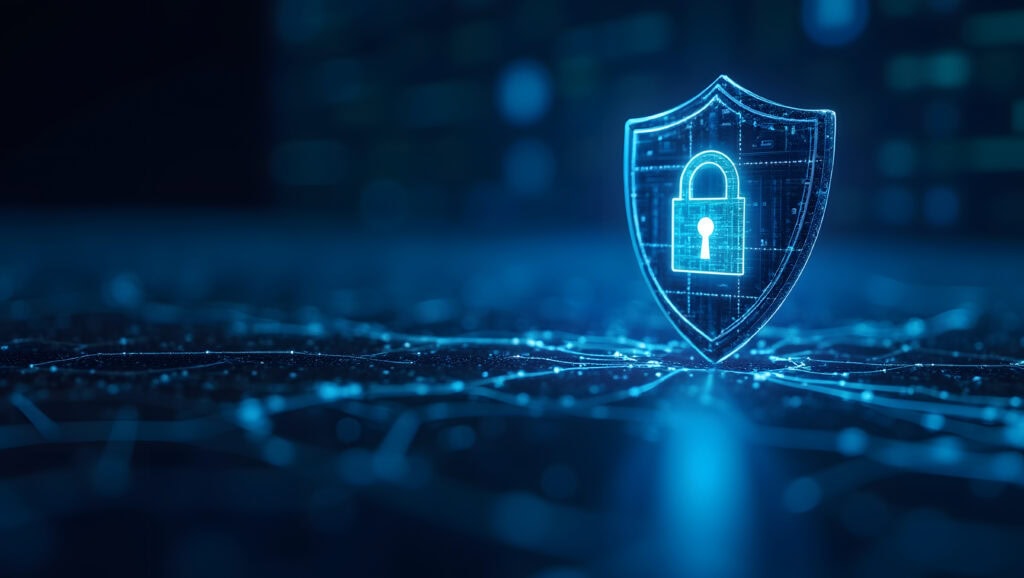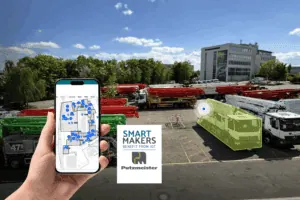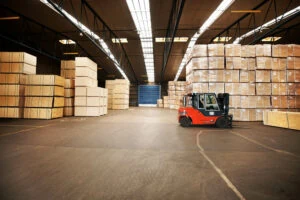Choosing the right tracking solution is a strategic decision that makes a significant contribution to increasing efficiency in production and logistics. But what should companies look out for when making their choice? Our guide shows you the eight most important criteria - from technological requirements to data protection and cost-effectiveness. Find out how to find the right solution and what advantages IoT tracking offers.
1. define clear goals
Before you implement a tracking solution, you should determine exactly which challenges you want to solve and which optimization potential you want to exploit. Is it about identifying bottlenecks in production processes, managing stock levels more efficiently or reducing shrinkage? Or is the focus on complying with regulatory requirements? The clearer the objective, the better you can select a solution that creates transparency, reduces costs and supports sustainable processes.
- Improve production processes: Identify bottlenecks and optimize processes
- Optimize stock levels: Monitor material flows in real time and manage stocks efficiently
- Reduce shrinkage: Minimize loss and theft through precise tracking
- Reduce costs: Increased efficiency and reduced search times as direct savings potentials
- Creating transparency: Seamless tracking of assets and materials in production
- Meet regulatory requirements: Comply with documentation obligations and safety standards
- Promoting sustainability: Ensure reuse and more efficient use of reusable containers
- Increase efficiency: Reduction of secondary manual tasks through automation
A clear objective makes it easier to select the right solution.

2. functional requirements
The functional and technological requirements include the following aspects:
- Transmission technology: Should the solution be based on Bluetooth Low Energy (BLE) or mobile radio standards such as IoT , for example? Each technology has different strengths and areas of application.
- Accuracy: Do you need a rough location determination (e.g. at hall level) or a highly precise location (e.g. accurate to the meter for industrial trucks or tools)?
- Tracking frequency: Should the trackers transmit data at short intervals or only once an hour or once a day? Should they only report on movement or when entering a certain area?
- Energy efficiency and battery life: A long battery life is particularly important for mobile assets such as containers or tools.
- Robustness: Does the hardware have to withstand extreme conditions such as heat, dust, moisture or chemical stress?
- Indoor vs. outdoor use: Not every technology works equally well in every environment. GPS, for example, is only reliable outdoors.
It is best to consult a specialist to find out which questions are relevant for you and how they can be answered.
3. scalability and flexibility
Requirements in production and logistics can change quickly. Your company is evolving - and so should your tracking solution.
- Take company growth into account: Choose a solution that grows with your company and can be rolled out to other production sites if required.
- Integration of new use cases: Clarify whether the solution is flexible enough to cover different use cases. If new problems arise, you want to solve them with existing systems wherever possible and avoid a heterogeneous system landscape.
- Modularity: Is it possible to add or adapt functions and tracker variants as required?
- Future-proof: Does the solution use open standards and does it offer expandability for future technologies?
4. data protection and security
In today's world, data security is a must. Make sure that the tracking solution meets high security standards to protect sensitive company data.
- Security practices: What industry standards or best practices are implemented in software development?
- Data security: Is the collected data transmitted and stored in encrypted form?
- Compliance: Do specific data protection guidelines (e.g. GDPR) or industry-specific standards need to be observed?
- Internal security checks: Are there internal processes in place to identify and address potential vulnerabilities?
- Emergency measures: Is there a response plan in place in the event of a security breach or data loss?

6. economic efficiency
A tracking solution should not only justify the investment costs, but also bring long-term savings and productivity gains. Consider:
- Acquisition vs. operating costs: In addition to the hardware, ongoing costs for maintenance, cloud services and licenses should also be considered.
- Increased efficiency: Does the solution reduce search times, production downtimes or material losses?
- Payback period and ROI: How profitable is the investment and how quickly does it pay for itself through savings or productivity gains?
7. user-friendliness and acceptance
An intuitive user interface and ease of use are crucial for your employees to be able to use the solution effectively. Nobody wants to struggle with complicated software.
- Simple operation: An intuitive user interface reduces the amount of training required.
- Acceptance in the company: The solution should support workflows without changing existing processes too much.
8. integration and infrastructure
The tracking solution must integrate seamlessly into existing IT systems and be compatible with preferred networks.
- Simple implementation: How much effort and time is required for setup and ongoing maintenance?
- System compatibility: Is integration into ERP, MES and WMS systems guaranteed?
- Self-sufficiency: Can the software also be operated independently of existing systems and without integration into your own network?
- Network connection: Is there compatibility with WLAN, 5G, LoRaWAN, IoT and other networks?
- Data flow: Is a smooth exchange of tracking data with existing systems possible, e.g. via an interface?
- Automated processes: Is there a possibility for integration into existing workflows and automation of tasks?
9. reliable support and maintenance
A good provider not only offers an excellent solution, but also reliable support and regular assistance. This ensures that your tracking solution is always up to date.
- Customer support: Does the provider offer rapid availability in the event of technical problems?
- Regular updates: Are security patches and functional improvements made available?
- Remote maintenance: Is it possible to diagnose and rectify faults remotely?
- Spare parts service: What is the availability of replacement devices?
- Training and documentation: Is support offered for familiarization and use?
Conclusion
Choosing the right tracking solution is a strategic decision that needs to be well thought out. By taking these criteria into account, you can ensure that you find a solution that meets the specific needs of your company and helps you achieve your goals.
Different technologies offer individual advantages and disadvantages. One of the strengths of IoT tracking is that it provides real-time data that enables an immediate response to changes. It improves transparency throughout the supply chain and enables more precise monitoring and control of production processes. In addition, IoT can automatically collect and analyse data, which further increases efficiency and minimizes human error.
Do you already have experience with tracking solutions or are you about to decide to implement such a solution? We will advise you free of charge and without obligation.




